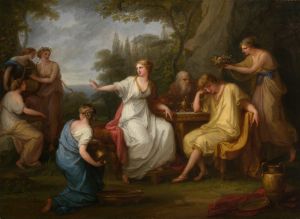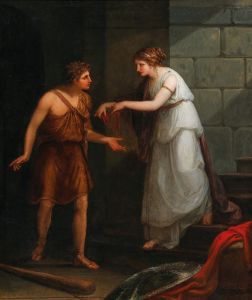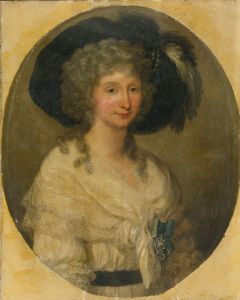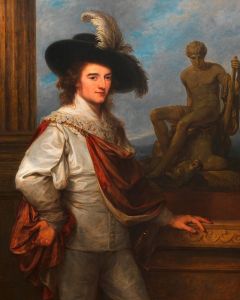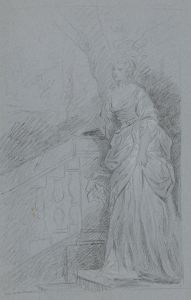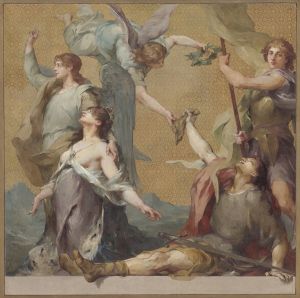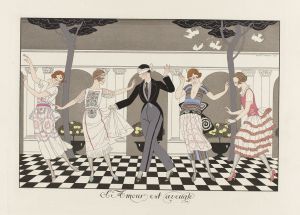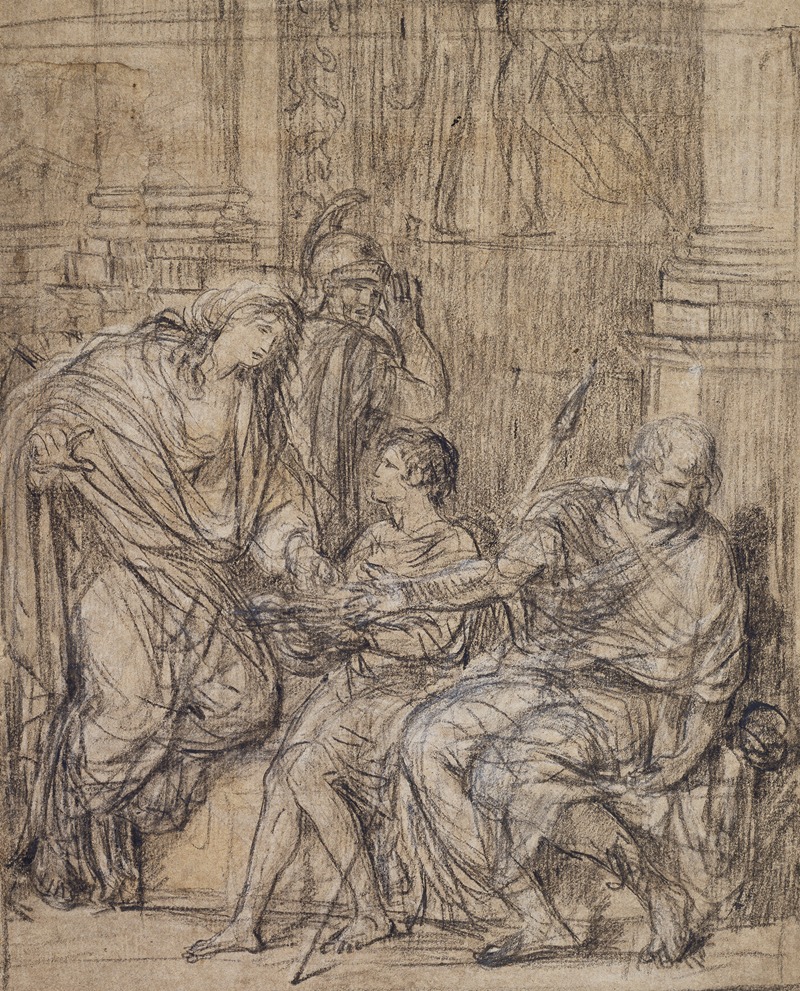
The blind Belisarius
A hand-painted replica of Angelica Kauffmann’s masterpiece The blind Belisarius, meticulously crafted by professional artists to capture the true essence of the original. Each piece is created with museum-quality canvas and rare mineral pigments, carefully painted by experienced artists with delicate brushstrokes and rich, layered colors to perfectly recreate the texture of the original artwork. Unlike machine-printed reproductions, this hand-painted version brings the painting to life, infused with the artist’s emotions and skill in every stroke. Whether for personal collection or home decoration, it instantly elevates the artistic atmosphere of any space.
Angelica Kauffmann's painting The Blind Belisarius is a notable work by the Swiss-born Neoclassical artist, who was one of the most prominent female painters of the 18th century. The painting depicts the legendary figure of Belisarius, a Byzantine general who, according to popular but historically debated accounts, was blinded and reduced to begging in his later years. This subject was a common theme in 18th-century art and literature, symbolizing the fall from power and the fragility of human fortune.
Kauffmann's interpretation of the story reflects her mastery of Neoclassical ideals, emphasizing emotion, moral virtue, and historical narrative. The composition typically portrays Belisarius as a dignified yet tragic figure, often accompanied by a young boy who guides him, and passersby who react with a mix of pity and admiration. The painting aligns with the Enlightenment-era interest in themes of justice, compassion, and the moral consequences of political actions.
Angelica Kauffmann was known for her ability to convey deep emotion and narrative clarity in her works, and The Blind Belisarius is no exception. Her use of soft, harmonious colors and carefully balanced compositions demonstrates her skill in blending Neoclassical aesthetics with a sensitivity to human emotion. This painting, like many of her works, reflects her interest in historical and mythological subjects, which were highly regarded in the art world of her time.
While the exact date of the painting's creation is not definitively documented, it is consistent with the themes and style that Kauffmann explored during her career, particularly in the late 18th century. The story of Belisarius was a popular subject among artists and writers of the period, inspired in part by Jean-François Marmontel's 1767 novel Bélisaire, which helped to revive interest in the tale.
Angelica Kauffmann was a founding member of the Royal Academy of Arts in London and achieved significant recognition during her lifetime. Her works, including The Blind Belisarius, continue to be celebrated for their artistic quality and their contribution to the Neoclassical movement. The painting is an example of her ability to merge historical storytelling with a focus on human emotion and moral reflection.
Further details about the current location or specific provenance of The Blind Belisarius are not readily available.






